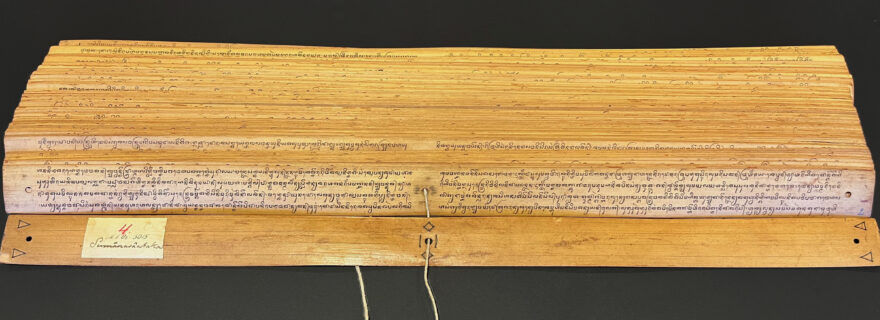Tradition and Modernity in the Palm-Leaf Manuscripts of Lombok
While military technology was adopted by the kingdom, the ancient palm-leaf manuscript tradition remained relevant in the culture and daily lives of the people of Lombok.


In 1894, two colonising powers faced each other across the narrow strait between the islands of Bali and Lombok. One was the Netherlands East Indies, an imperialist project determined to assert its authority over the entire Indonesian archipelago. The other was the kingdom of Lombok, ruled by a settler regime from Bali that dominated the island’s indigenous Sasak population. The showdown between them culminated in the destruction of the kingdom’s palaces in mid-November 1894. After the final battle, the vast treasure hoard of the Lombok kingdom was seized by the Netherlands Indies government: 230 kilograms of gold, seven tonnes of silver, innumerable pieces of fine jewellery, and one of the most significant libraries of Indonesian palm-leaf manuscripts ever collected. This collection of manuscripts was donated by the Indies government in 1906 to Leiden University Library (Witkam 2007: 8), where it remains today except for one manuscript. This manuscript contains a bundle of Old Javanese poems, including the uniquely important Javanese chronicle Deśavarṇana (Or. 5023), which tells the history of the Majapahit kingdom in the 14th century, was repatriated to Indonesia in 1973 and is now kept in the National Library in Jakarta.
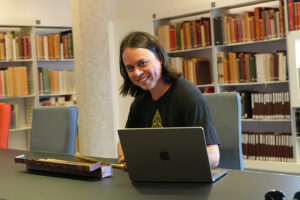

The Lombok manuscript library is the focus of my Scaliger Fellowship research at Leiden University Library. It consists of over 450 shelf items in the Library’s Oriental collection (Or.) and contains a dizzying variety of texts: epic poems, chronicles, religious treatises, magical formulas, law codes, letters, business contracts, and personal notes. Many of the manuscripts were produced in the 19th century, but some are very much older than that. The Lombok collection contains a rich selection of literary classics from medieval Java. It includes some of the oldest extant Indonesian texts, including the Buddhist treatise Sang Hyang Kamahāyānikan written over a millennium ago (Or. 5068, Or. 5083, Or. 5129), as well as rare Old Javanese poems like Pārthayajña (Or. 5024) and Kr̥ṣṇāyaṇa (Or. 5040). These texts survived through unbroken chains of transmission, being copied from one manuscript to another over the centuries. From the colophons attached to the manuscripts, we can trace the journey of many texts from medieval Java, through early modern Bali in the 16th and 17th centuries, and finally to Lombok in 1894.
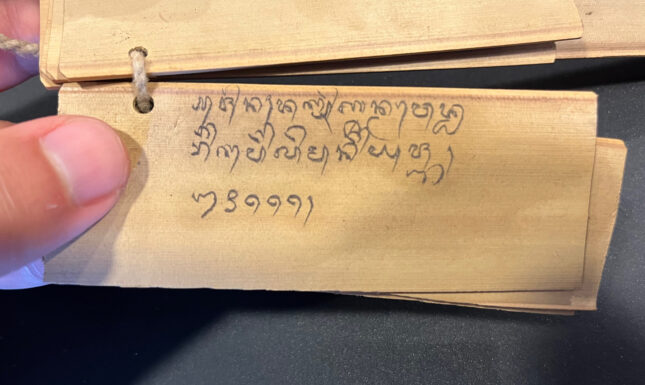

The palm-leaf manuscript tradition was thriving in the 19th-century kingdom of Lombok. While islands like Java and Sumatra had long switched to using paper, with a burgeoning print industry in major urban centres, the Balinese people in Lombok remained loyal to their traditional methods of writing on palm-leaves. They used palm leaf not just for their literary masterpieces, but for the most mundane of texts: a list of books from the deceased estate of a priest (Or. 5302), home remedies for male sexual dysfunction (Or. 5409), invoices for ceremonial expenses (Or. 5239), and a thank-you note attached to a gift of four baskets of limes, given by a commoner to his lord (Or. 5298). The palm-leaf manuscripts of the Lombok collection thus offer vivid glimpses of everyday life in this hierarchical settler society.
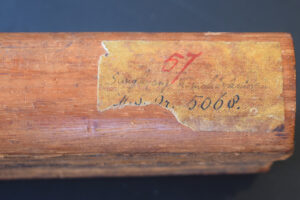

The Balinese commitment to their manuscript tradition was not due to any reluctance to modernise. The kingdom of Lombok had embraced advanced military technologies, which made it particularly difficult and expensive for the Dutch to conquer in 1894. Playing on European rivalries, the King purchased two British-crewed steamships from Singapore in the early 1890s, which provoked an unsuccessful naval blockade by the Dutch (van der Kraan 1980: 40). Nonetheless, their millennium-old literary heritage provided a framework to understand current affairs. The collection contains a promulgation of a formal treaty with the Netherlands Indies Government (Or. 5296), in which the King begins his decree by citing a fable from the Udyogaparwa, a 10th-century Old Javanese adaptation of the fifth book of the Sanskrit epic Mahābhārata (Or. 5020, Or. 5028). Tradition and modernity appear to be in harmony in these palm-leaf manuscripts.
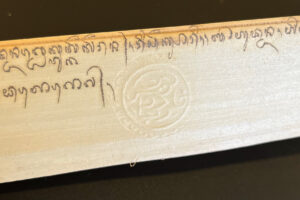

We have barely scratched the surface of the Lombok palm-leaf library. There are many viable approaches to studying such a diverse group of documents. Philologists have been most interested in the individual copies of the classic works of literature found among them. The hundreds of letters in the collection, both diplomatic and personal, are an untouched trove of primary evidence. The history of the seizure of this collection and its transfer to the Netherlands are highly pertinent to current discussions about restitution and decolonisation. My own research focuses on the paratexts attached to the manuscripts, such as colophons and commemorative notes, which reflect the close ties between eastern Bali and Lombok from the 16th to the 18th century. I invite anyone interested to explore the palm-leaf manuscripts of the Lombok collection at Leiden University Library, in the hope that their immense value for historical and philological scholarship can be fully realised.
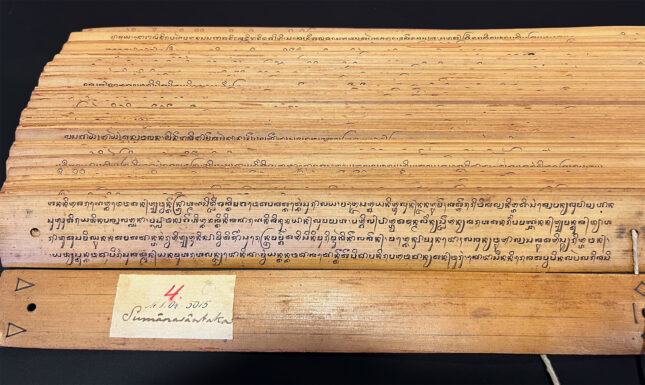

About the author
Wayan Jarrah Sastrawan is a Postdoctoral Research Fellow at the École française d’Extrême-Orient (Paris) as a member of the project DHARMA. He is a historian of premodern Indonesia, specialising in Java and Bali and researches the traditional texts of the archipelago, to find new ways of understanding the region's peoples.
Further reading
van Beurden, Jos. 2017. Treasures in Trusted Hands. Leiden: Sidestone Press.
van der Kraan, Alfons. 1980. Lombok: Conquest, Colonization and Underdevelopment, 1870–1940. Singapore: Heinemann Educational Books (Asia) Ltd.
Witkam, Jan Just. 2007. Inventory of the Oriental Manuscripts of the Library of the University of Leiden. Vol. 6. Leiden: Ter Lugt Press.


